When it comes to personal style, everyone seeks to express themselves uniquely. However, figuring out how to create an outfit that not only reflects your personality but also stands out can be a daunting task. Whether you’re prepping for a casual day out or a formal event, the secret lies in mastering a few fashion hacks that can transform your look from ordinary to extraordinary. Some essential tips and tricks that will help you create outfits that are not only stylish but also uniquely you.
Understanding the Basics of Color Theory
In the realm of fashion, color serves as more than just an aesthetic choice; it’s a means of communication. By grasping the essentials of color theory, you can unlock the ability to craft outfits that not only catch the eye but also convey the mood or statement you wish to make. Start by familiarizing yourself with the color wheel, a fundamental tool for combining colors effectively. Complementary colors, positioned opposite each other, offer a striking contrast that can breathe life into any ensemble. For a subtler approach, consider analogous colors, which are side by side on the wheel and create a serene and cohesive look.
Bold hues can command attention and inject vibrancy into your wardrobe. Yet, it’s crucial to balance these with neutrals to avoid visual overload. Neutrals serve as the foundation of any outfit, allowing more vivid colors to stand out without competing for attention. Embracing a monochromatic scheme, using various shades of a single color, can result in a sophisticated and impactful outfit.
Remember, the significance of color extends beyond aesthetics; it can also influence perceptions of size and shape. Lighter colors tend to draw attention and can make areas appear larger, while darker shades recede and can have a slimming effect. Utilizing these principles allows you to highlight your assets and craft outfits with intentional visual balance. Armed with knowledge of color theory, you’re well-equipped to assemble standout looks that are not only visually appealing but also harmoniously aligned with your personal style and the message you desire to convey.
Selecting the Right Pieces for Your Body Type
Understanding the nuances of your body shape is crucial in curating an outfit that not only turns heads but also enhances your natural silhouette. Begin by identifying your body type—be it pear, apple, hourglass, or rectangle. Each shape has distinct characteristics that, when dressed thoughtfully, can elevate your overall appearance. For those with a pear shape, emphasizing the upper body with eye-catching tops and balancing the lower body with A-line skirts or straight-leg pants can create a harmonious silhouette. Apple-shaped individuals can benefit from pieces that draw attention away from the midsection, such as V-neck tops or empire waist dresses, which can help elongate the figure.
Embracing tailored clothing is a universal tip that applies to all body types. Garments that fit impeccably lend a sleek and sophisticated vibe to any ensemble. For example, a well-fitted blazer can accentuate the waistline for hourglass figures or add structure for those with a rectangle shape. It’s not about hiding your body but rather highlighting the areas you feel most confident about while balancing proportions with smart styling choices.
Experimenting with various fabrics and cuts can also reveal what best suits your shape. Structured materials might provide the definition needed for softer silhouettes, whereas flowing fabrics can offer movement and a sense of ease for more angular body types. Ultimately, selecting the right pieces for your body type is about achieving a blend of comfort and confidence. It encourages a personal style that not only looks good but feels authentic to who you are, ensuring that every outfit you create is a true reflection of your individuality.
Mixing Patterns and Textures with Confidence
Navigating the art of mixing patterns and textures can initially seem intimidating, yet it’s a gateway to crafting ensembles that captivate and express one’s fashion-forward mindset. The trick lies in maintaining a cohesive color palette while daring to blend diverse patterns and tactile elements. For a harmonious look, consider leveraging a primary color that ties disparate patterns together, such as a polka dot scarf and a hound stooth skirt sharing a mutual hue. This approach ensures a unified aesthetic despite the variance in patterns.
Delving into textures, juxtaposition plays a crucial role in adding dimension and intrigue to your outfit. The contrast between smooth and coarse materials, like pairing a sleek leather jacket with a delicate chiffon dress, creates a tactile interest that is visually pleasing. When integrating multiple textures, maintaining a balance is key; too much variety can overwhelm, while the right amount enriches the outfit’s depth.
Moreover, when mixing patterns, scale variation is your ally. Pairing a large floral print with a smaller geometric design prevents visual competition and allows each pattern to stand out without overpowering the other. Similarly, when combining textures, consider how light interacts with the surface; shiny materials can highlight areas of the body, while matte finishes tend to downplay.
Embracing this approach requires a bit of experimentation and a willingness to step outside conventional style boundaries. Start with subtle combinations and gradually build your confidence. As you explore the endless possibilities, you’ll discover that mixing patterns and textures is not just about creating an outfit; it’s about weaving together a story that is distinctly your own, adding a layer of personal expression that resonates in the world of fashion.
Layering Like a Pro for Any Season
Layering is an art form that serves both aesthetic and functional purposes, enabling you to navigate shifts in temperature while adding depth to your ensembles. The foundation of any layered look is a solid base layer—think a comfortable, form-fitting tank top or a lightweight long-sleeve shirt. This piece should be snug enough to sit smoothly under additional layers without adding bulk. Next, introduce a middle layer, such as a classic button-up shirt or a chic turtleneck, to add warmth and texture. This piece can play with the color palette you’ve established, either by complementing or offering a striking contrast to your base layer.
The outer layer is where your personal style really shines through. Choose from a variety of options like a tailored blazer, a soft cardigan, or a statement coat depending on the occasion and weather. Each choice can dramatically alter the vibe of your outfit, from polished and professional to relaxed and casual. Remember, the key to successful layering is in the details; varying the lengths and materials of each layer will create an interesting silhouette and prevent your look from appearing too uniform.
Don’t overlook the power of accessories in layering. A scarf can add a pop of color or pattern, while belts can define your waist and add structure to looser layers. The act of layering also provides an excellent opportunity to play with textures, as mentioned previously, by combining different fabrics like wool, silk, and denim for a rich, tactile experience. Through thoughtful layering, you can craft outfits that are not only versatile and comfortable but also deeply expressive of your unique style, regardless of the season.
Incorporating Statement Pieces for a Personal Touch
Statement pieces act as the exclamation point in the sentence of your outfit, delivering that distinct flair and individuality that makes your style uniquely yours. Opting for an eye-catching accessory or garment can elevate even the most basic ensemble into a remarkable look that captures attention and sparks conversation. The art lies in choosing items that resonate with your personal narrative—whether it’s an heirloom watch, a vintage belt, or a contemporary art-inspired handbag. These elements should not only stand out for their boldness but also for how they mirror your personality and aesthetic preferences.
When integrating a statement piece into your outfit, balance and proportion become key considerations. For instance, a brightly colored pair of sneakers can serve as a vibrant focal point when paired with neutral, minimalist clothing, allowing the shoes to take center stage without overwhelming the overall look. Similarly, a chunky, ornate necklace might pair beautifully with a simple, elegant dress, creating a sophisticated yet eye-catching contrast.
It’s also important to think about the context and setting in which the statement piece will be worn. A large, flamboyant hat might be perfect for a day at the races but less suited to a formal office environment. Matching the statement piece to the occasion ensures that it enhances rather than detracts from your intended message.
In essence, statement pieces are a reflection of your creativity and confidence. They are the elements within your wardrobe that invite admiration and curiosity, allowing you to showcase your fashion sense while staying true to your unique style narrative. By thoughtfully selecting and incorporating these standout items, you craft not just an outfit, but a visual story that is distinctly your own.
Accessorizing to Elevate Your Outfit
Accessorizing is the secret weapon in the arsenal of fashion. It’s the subtle art of taking an outfit from good to unforgettable. Imagine stepping out with a classic ensemble; it’s the carefully chosen accessories that whisper a story of elegance and individuality. Think of accessories as the punctuation marks in the language of style—they can elevate, define, and complete an outfit with precision.
A carefully curated selection of accessories has the power to transform any look. A sleek leather belt cinched at the waist can redefine the silhouette of a dress, offering both shape and a focal point. Layered necklaces can add depth and intrigue to a simple top, creating an eye-catching cascade of metal and stone. Even something as functional as a bag can serve as a statement piece, with its design, color, or texture adding a distinctive touch to your overall appearance.
The magic of accessories lies in their versatility. A vibrant scarf can be worn in countless ways—draped around the neck, tied to a bag for a pop of color, or even worn as a headband for a chic, bohemian twist. Sunglasses, in their myriad shapes and sizes, can frame the face and add an air of mystery or glamour, depending on the chosen style.
Remember, the key to successful accessorizing is balance. It’s about enhancing your outfit without overwhelming it. The choice of accessories should complement the ensemble, not compete with it. Whether it’s the sparkle of jewelry, the sleekness of a belt, or the bold statement of a hat, each accessory you choose is a reflection of your personal style. Let your accessories speak volumes, allowing them to bring an extra layer of sophistication and personality to every outfit you curate.
Paying Attention to Fit and Comfort
Achieving the perfect look is not just about the visual appeal; it’s equally about how an outfit feels when worn. A well-fitting piece complements your body shape and enhances your overall appearance, making tailoring a worthwhile investment for those clothes that are just shy of perfection. It’s not merely about adhering to size charts; it’s understanding how clothes rest on your frame, accentuating your strengths and elegantly disguising areas you’re less fond of.
Comfort, on the other hand, is the linchpin of genuine style. Clothes that bind, pinch, or hinder your movement can detract from your confidence, casting a shadow on even the most meticulously curated ensemble. Therefore, it’s crucial to select fabrics and cuts that offer ease and freedom, ensuring you remain as comfortable as you are stylish throughout the day.
Incorporating pieces that both fit well and feel good promotes a seamless blend of form and function. This symbiosis encourages not just a positive self-image but also a readiness to embrace the day’s challenges with poise. Fabrics that breathe, stretch where needed, and maintain their shape are key allies in this endeavor.
Remember, an outfit’s true test lies not in the mirror alone but in its ability to accompany you through the day’s activities with grace and comfort. By giving equal importance to fit and comfort, you lay the foundation for a wardrobe that not only looks spectacular but also feels like a second skin, ready to take on the world with you.
Experimenting with Trends Mindfully
Navigating the ever-changing landscape of fashion trends can be both exhilarating and daunting. The allure of new styles and the desire to stay current can sometimes lead to choices that don’t genuinely resonate with our personal aesthetic. To experiment with trends in a way that enhances rather than dilutes your individual style, it’s essential to be selective. Assess each trend carefully, considering how it aligns with your existing wardrobe and whether it complements your body type and color preferences.
Incorporate trendy elements in moderation, using them as accents rather than the foundation of your outfit. This approach allows you to stay contemporary while maintaining a timeless base. For example, if oversized blazers are in vogue, pair one with your classic jeans and a favorite tee to strike a balance between trendiness and personal style. This method ensures that you embody current fashion in a way that feels authentic and sustainable.
Additionally, think of trends as a source of inspiration rather than a strict guideline. Allow them to spark creativity in how you mix patterns, layer, or choose statement pieces, but always bring the focus back to what feels true to your style narrative. By mindfully engaging with trends, you cultivate a wardrobe that is both modern and reflective of your unique identity, ensuring that your outfits always stand out in a way that’s distinctly you.

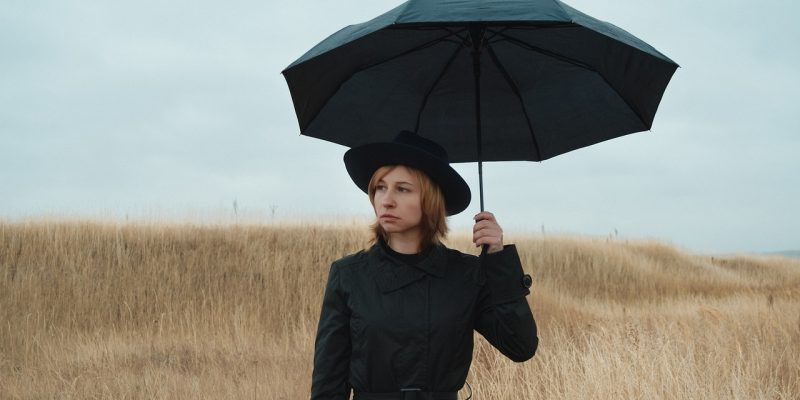


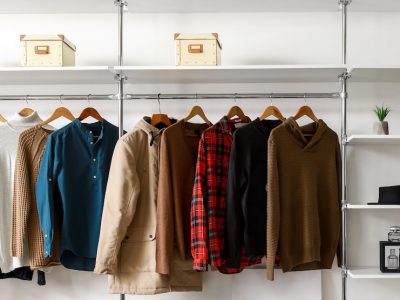
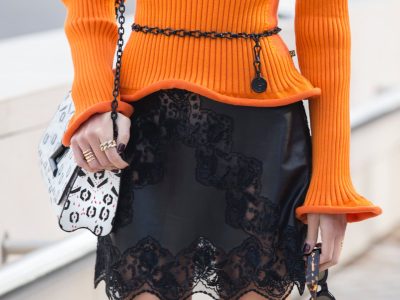
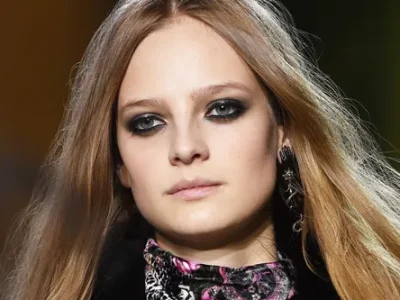
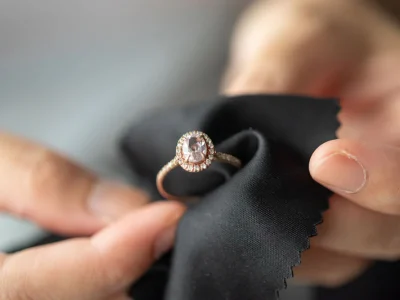





Comments